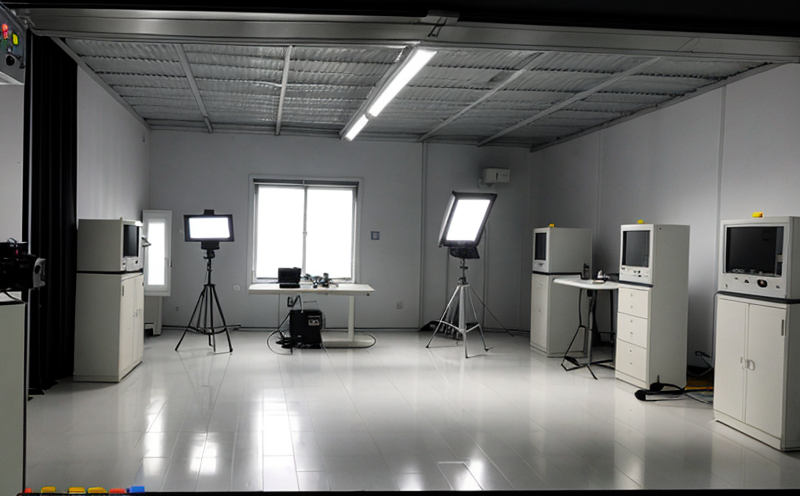IEC 60969 Photometric Testing of Self Ballasted Lamps
The International Electrotechnical Commission (IEC) Standard IEC 60969 specifies the requirements for photometric testing of self-ballasted lamps. These lamps are widely used in various lighting applications, from automotive headlights to commercial fixtures.
Photometric testing is crucial because it ensures that these lamps meet specified light distribution and color performance criteria. This standard defines how to measure and evaluate the luminaire's optical characteristics, including intensity, luminous flux, chromaticity coordinates, and color rendering index (CRI). Compliance with IEC 60969 not only guarantees product quality but also ensures safety and efficiency in lighting design.
The testing process involves several steps. Initially, the lamps are prepared according to standard procedures, ensuring they are at optimal operating conditions before measurement. The test setup includes a photometer capable of capturing light distribution patterns over a 360-degree field. The apparatus used must adhere strictly to IEC standards to ensure accurate and reproducible results.
The testing process typically follows these steps:
- Preparation of the lamp in accordance with the standard
- Placement of the lamp in the test fixture
- Measurement of light intensity at various points around the luminaire
- Evaluation of color rendering and chromaticity coordinates
- Calculation of luminous flux, CRI, and other relevant metrics
The results are compared against specified limits defined in IEC 60969 to determine compliance. Non-compliance may indicate issues with the lamp's design or manufacturing process.
| Parameter | Units | Standard Limits |
|---|---|---|
| Luminous Flux | LM | ≥80% of nominal value |
| CRI | - | ≥80 |
| Color Temperature | K | +/- 50 K of nominal value |
The testing process is not only about meeting standards but also ensuring product consistency. This is critical for manufacturers and quality managers looking to maintain a high level of performance across their product lines.
Lighting designers, compliance officers, and R&D engineers rely on rigorous photometric testing to ensure that self-ballasted lamps meet all necessary requirements. By adhering to IEC 60969, manufacturers can enhance the safety and efficiency of lighting products while maintaining market competitiveness.
Why It Matters
Photometric testing under IEC 60969 is essential for ensuring the quality and reliability of self-ballasted lamps. These lamps play a crucial role in various applications, from automotive headlights to architectural lighting fixtures. Compliance with this standard ensures that the lamps meet specified optical performance criteria, including intensity distribution, color rendering, and chromaticity.
The importance of photometric testing extends beyond just meeting regulatory requirements. It also helps manufacturers maintain consistency in product quality, which is vital for building customer trust and ensuring long-term reliability. For compliance officers, adherence to IEC standards ensures that products meet international safety and performance benchmarks.
For R&D engineers, this testing process provides valuable insights into the design and manufacturing processes. By identifying any discrepancies between actual test results and expected outcomes, engineers can make necessary adjustments to improve product performance. This is particularly important in sectors where light quality directly impacts user experience, such as automotive or healthcare environments.
Lighting designers benefit from photometric testing by gaining a deeper understanding of how different lamp designs affect overall lighting performance. This knowledge helps them create more efficient and aesthetically pleasing lighting solutions that meet both functional and aesthetic needs.
Scope and Methodology
| Test Parameter | Description | Standard Reference |
|---|---|---|
| Luminous Flux | Total emitted light in lumens. | IEC 60969:2018 Clause 4.3 |
| CRI (Color Rendering Index) | Measure of how well a light source reveals the colors of various objects. | IEC 60969:2018 Clause 4.5 |
| Color Temperature | Temperature in Kelvin that describes the color appearance of a light source. | IEC 60969:2018 Clause 4.4 |
The testing methodology involves precise measurement using photometric instruments calibrated according to IEC standards. The lamps are placed in a darkroom environment, and the light is captured at various angles around the luminaire. This comprehensive approach ensures that all aspects of the lamp's optical performance are evaluated accurately.
Quality and Reliability Assurance
- Consistent use of calibrated equipment to ensure accurate measurements.
- Detailed documentation of test procedures, results, and any deviations from expected outcomes.
- Regular calibration and maintenance of testing instruments to prevent measurement errors.
- Training of personnel involved in the testing process to adhere to IEC 60969 guidelines.
The quality assurance process is critical for maintaining product reliability and consistency. By adhering strictly to IEC standards, manufacturers can ensure that their lamps meet all necessary requirements, enhancing both safety and performance. This approach also supports ongoing improvements in lighting technology, leading to more efficient and effective lighting solutions.





